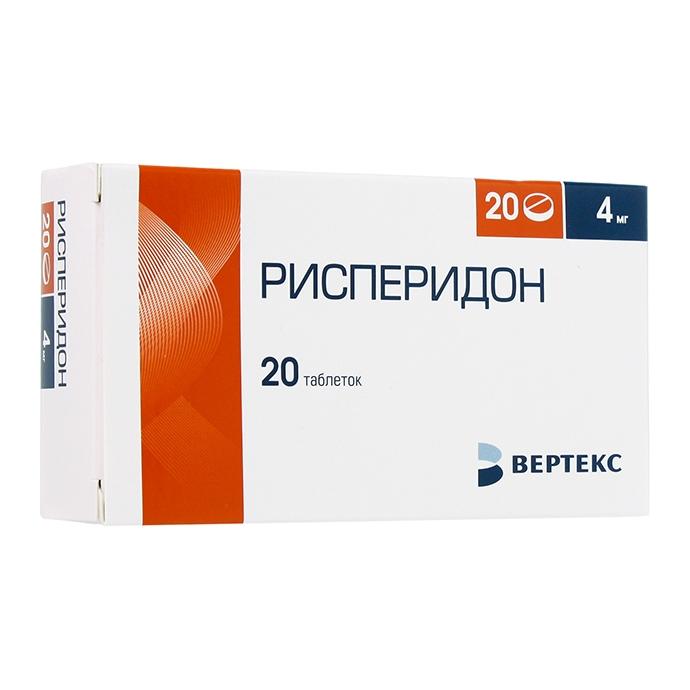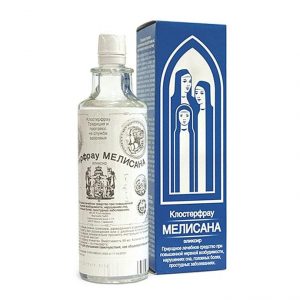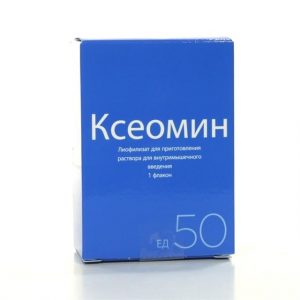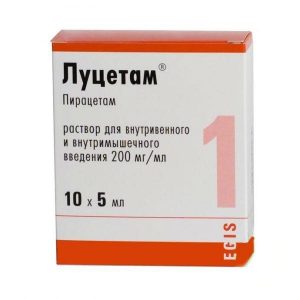Description
Latin name
RISPERIDONE
release form
film-coated tablets
Packing
10 pcs – blister packs (2) – packs of cardboard.
Pharmacological action
Risperidone is an antipsychotic (antipsychotic) derived from benzisoxazole. It also has a sedative,. antiemetic and hypothermic action. Selective monoaminergic antagonist, has a high tropism for serotonergic 5-HT2 and dopaminergic D2 receptors. It also binds to alpha1-adrenergic receptors with somewhat lower affinity for H1-histaminergic and alpha2-adrenergic receptors. It has no tropism for cholinergic receptors.
Antipsychotic effect due to blockade of dopamine D2 receptors of the mesolimbic and mesocortical system. Sedative effect is due to blockade of adrenoreceptors of the reticular formation of the brain stem antiemetic effect – blockade of dopamine D2 receptors of the tshter zone of the vomiting center hypothermic effect – blockade of dopamine receptors of the hypothalamus.
Suppresses productive symptoms (delirium, hallucinations, aggressiveness), automatism. It causes less suppression of motor activity and less induces catalepsy than classic antipsychotic drugs (antipsychotics). Balanced central antagonism of serotonin and dopamine can reduce the tendency to extrapyramidal side effects and expand the therapeutic effect of the drug to cover the negative and affective symptoms of schizophrenia.
May induce a dose-dependent increase in plasma prolactin concentrations.
Pharmacokinetics
Absorption is fast and complete. Food does not affect the completeness and speed of absorption. TCmax of risperidone – 1 hour, 9-hydroxyrisperidone – 3 hours (with high activity of the CYP2D6 isoenzyme) and 17 hours (with low activity of the CYP2D6 isoenzyme). The concentration of risperidone in plasma is proportional to the dose of the drug. The equilibrium concentration of risperidone in most patients is achieved within 1 day, 9-hydroxy-risperidone in 4-5 days.
Risperidone is rapidly distributed in the body. Penetrates into the central nervous system (CNS), breast milk. The volume of distribution is 1-2 l / kg. The binding to plasma proteins (with alpha1-acid glycoprotein and albumin) risperidone is 90%, 9-hydroxyrisperidone – 77%.
Metabolized by the CYP2D6 isoenzyme to the active metabolite, 9-hydroxyrisperidone (risperidone and 9-hydroxyrisperidone make up the active antipsychotic fraction). Another route of risperidone metabolism is N-dealkylation.
The half-life of risperidone is 3 hours 9-hydroxyrisperidone and the active antipsychotic fraction is 20-24 hours
Excreted by the kidneys (70%: of which 35-45% – in the form of a pharmacologically active fraction) and the intestine (14%).
A study of a single dose of the drug revealed a higher plasma concentration and slower excretion in elderly patients and in patients with renal failure. Excretion is slowed down in elderly patients and in patients with renal failure.
In liver failure, plasma risperidone levels increase by 35%.
Indications for
schizophrenia (acute and chronic) and other psychotic conditions with productive and / or negative symptoms
affective disorders in various mental illnesses
behavioral disorders in patients with dementia with symptoms of aggressiveness (outbreaks of anger, physical abuse) activity (agitation, delirium) or psychotic symptoms of
as adjunctive therapy for the treatment of mania in bipolar disorders
as an aid Yelnia treatment of conduct disorder in adolescents from 15 years and adult patients with reduced intellectual level or mental retardation, in cases where destructive behavior (aggressiveness, impulsivity, autoaggression) is the leading clinical picture of the disease
Contraindications
hypersensitivity
lactation
childhood (up to 15 years) – efficacy and safety have not been established.
Precautions: used for brain tumor, intestinal obstruction, drug overdose, Reye syndrome (the antiemetic effect of risperidone can mask the symptoms of these conditions), diseases of the cardiovascular system (chronic heart failure, atrioventricular block, myocardial infarction), dehydration, cerebrovascular accident, hypovolemia, Parkinson’s disease, seizures (including a history), drug abuse, drug dependence, severe renal failure, severe liver failure, conditions predisposing to the development of tachycardia type “Pirouette” (bradycardia, electrolyte imbalance, concomitant use of drugs that extend the QT interval), pregnancy.
Use in pregnancy and lactation
Use in pregnancy is possible if the expected benefit of the therapy for the mother outweighs the potential risk to the fetus.
If you need to use during lactation, breastfeeding should be discontinued
Composition
1 tablet contains:
active substance:
risperidone 4 mg
Excipients:
lactose monohydrate
cellulose microcrystalline
starch corn srdlcdc magnesium silica
Dosage and administration
Applied orally. Adults and children over 15 years of age are prescribed 1 or 2 times a day.
Schizophrenia. The initial dose is 2 mg per day. On day 2, up to 4 mg per day. From this moment, if necessary, the dose can either be maintained at the same level or individually adjusted in the range of 4-6 mg per day.
Doses above 10 mg per day have not shown higher efficacy compared to lower doses and may cause extrapyramidal symptoms. The maximum daily dose is 16 mg.
Behavioral disorders in patients with dementia: The optimal dose is 1 mg 1 time per day.
Bipolar disorder with mania: initial dose – 2 mg per day for 1 dose. Increasing the dose (by 2 mg per day) – no more than every other day. The optimal dose is 2-6 mg per day.
Behavioral disorders in patients with mental retardation or with a dominant clinical picture of destructive tendencies. Patients weighing 50 kg or more. The optimal dose is 1 mg per day.
It is recommended to reduce 2 times as an initial dose, and subsequent dose increases in elderly patients and in patients with renal or hepatic insufficiency (if necessary, use an adequate dosage form).
Side effects of
From the central nervous system: insomnia, agitation, anxiety, headache, drowsiness, fatigue, dizziness, decreased ability to concentrate, blurred vision, extrapyramidal symptoms (tremor, rigidity, hypersalivation, acridisia, bradykinesia, dystonia), mania or hypomania, stroke (in elderly patients with predisposing factors). In patients with schizophrenia – hypervolemia (either due to polydipsia, or due to the syndrome of inadequate secretion of antidiuretic hormone), tardive dyskinesia (involuntary rhythmic movements, mainly of the tongue and / or face), malignant neuroleptic syndrome (hyperthermia, muscular rigidity, instability , impaired consciousness and increased activity of creagin phosphokinase), violation of thermoregulation, epileptic seizures.
From the digestive system: constipation, dyspepsia, nausea or vomiting, abdominal pain, increased activity of hepatic transaminases, dry mouth, hyposalivation or hypersalivation, anorexia.
From the cardiovascular system: orthostatic hypotension, reflex tachycardia, or increased blood pressure (BP).
From the hemopoietic organs: neutropenia, thrombocytopenia.
From the endocrine system: galactorrhea, gynecomastia, menstrual irregularities, amenorrhea, increase or decrease in body weight, hyperglycemia, or exacerbation of pre-existing diabetes mellitus.
From the genitourinary system: priapism, erectile dysfunction, ejaculation disorders, orgasm disorders, including anorgasmia, urinary incontinence.
Allergic reactions: itching, rash, angioedema.
From the skin: dry skin, hyperpigmentation, seborrhea, photosensitivity.
Other: arthralgia, rhinitis.
Drug interaction
Risperidone reduces the effectiveness of levodopa and dopamine agonists. Phenothiazines, tricyclic antidepressants and beta-blockers increase the plasma risperidone concentration (do not affect the concentration of the active antipsychotic fraction).
The concomitant administration of carbamazepine and other inducers of microsomal enzymes results in a decrease in the concentration of the active antipsychotic fraction of risperidone in plasma. Clozapine reduces the clearance of risperidone.
When used together with risperidone with ethanol, drugs that depress the central nervous system (CNS) lead to an additive suppression of CNS function.
Hypotensive medicines increase the severity of blood pressure reduction with the use of risperidone.
Fluoxetine may increase plasma risperidone (to a lesser extent, its active antipsychotic fraction).
Overdose
Symptoms: drowsiness, sedation, tachycardia, decreased blood pressure, extrapyramidal disorders, rarely – QT lengthening.
Treatment: Provide free airway for adequate oxygen supply and ventilation, gastric lavage (after intubation if unconscious) and activated charcoal along with laxative.
Start ECG monitoring immediately to detect possible arrhythmias. There is no specific antidote. It is necessary to conduct symptomatic therapy aimed at maintaining the vital functions of the body.
When reducing blood pressure and vascular collapse – intravenous infusion solutions and / or adrenostimulators. In case of acute extrapyramidal symptoms – anticholinergic drugs. Continuous medical monitoring and monitoring should continue until the symptoms of intoxication have disappeared.
Storage conditions
In a dry, dark place at a temperature of no higher than 25 ° C.
Expiration
2 years.
Deystvuyuschee substances
Risperidone
dosage form
dosage form
tablets
Vertex, Russia




